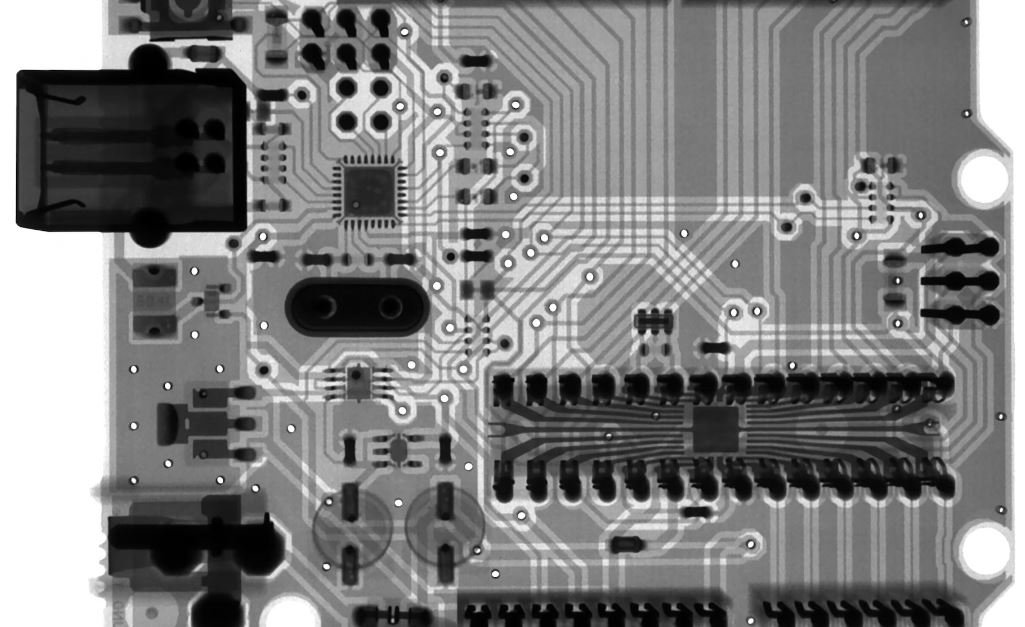Neural Net Structure
Neural networks, also known as artificial neural networks, are a type of machine learning model inspired by the structure and function of the biological brain. They are composed of interconnected nodes, or artificial neurons, that work together to process and analyze complex data. The neural net structure plays a crucial role in determining the model’s performance and effectiveness in solving various tasks.
Key Takeaways:
- Neural networks are machine learning models inspired by the structure and function of the brain.
- The neural net structure is composed of interconnected nodes, or artificial neurons.
- The structure determines the model’s performance and effectiveness in solving various tasks.
At its core, a neural network consists of three main components: the input layer, hidden layers, and the output layer. The input layer receives the initial data, which is then fed into the hidden layers for processing. These hidden layers are responsible for transforming the data through various mathematical operations and learned parameters. Finally, the transformed data is outputted through the output layer, providing the model’s prediction or classification result.
*The number of hidden layers and the number of neurons in each layer are design choices that can influence the neural network’s performance.*
In terms of connectivity, artificial neurons within a neural network are often organized in different ways. One commonly used structure is the fully connected layer, also known as the dense layer. In this structure, each neuron is connected to every neuron in the adjacent layers, allowing for a high degree of learning and information exchange. However, the dense structure can lead to high computational costs and overfitting in certain cases.
*The choice of connectivity structure depends on the specific task and dataset.*
Neural Net Structures:
| Structure | Characteristics |
|---|---|
| Feedforward Neural Network (FNN) |
|
| Recurrent Neural Network (RNN) |
|
| Convolutional Neural Network (CNN) |
|
Neural networks can have different activation functions applied to the artificial neurons, allowing for non-linear transformations of the input data. Some commonly used activation functions include the sigmoid function, tanh function, and rectified linear unit (ReLU) function.
*The choice of activation function can impact the neural network’s ability to model complex relationships within the data.*
Additionally, there are various training algorithms available for neural networks. These algorithms are responsible for adjusting the model’s parameters, such as the weights and biases of the artificial neurons, to minimize the difference between the predicted outputs and the true outputs. Some popular training algorithms include backpropagation, stochastic gradient descent, and adaptive moment estimation (Adam).
*By iterating through the training data and updating the parameters, the neural network gradually improves its predictive capabilities.*
Training Algorithms Comparison:
| Algorithm | Advantages | Disadvantages |
|---|---|---|
| Backpropagation |
|
|
| Stochastic Gradient Descent (SGD) |
|
|
| Adaptive Moment Estimation (Adam) |
|
|
In conclusion, the neural net structure is a critical factor in determining the performance and effectiveness of a neural network. Various design choices, such as the number of layers, connectivity, activation functions, and training algorithms, can significantly impact the model’s ability to learn and make accurate predictions. Understanding these structural components is essential for achieving optimal results in different machine learning tasks.

Common Misconceptions
There are several common misconceptions people have around the topic of neural net structure. Understanding and clarifying these misconceptions is crucial for grasping the underlying principles of artificial neural networks.
Misconception 1: Neural networks are exactly like the human brain.
- Neural networks are inspired by the structure of the human brain but are much simpler in comparison.
- They lack the complexity and biological intricacies present in the human brain.
- Neural networks do not possess consciousness or emotions like humans do.
Misconception 2: Bigger neural networks always perform better.
- Increasing the size of a neural network doesn’t guarantee better performance.
- Large networks can lead to overfitting, where the model becomes too specialized on the training data and fails to generalize well.
- Complex problems may require increased network sizes, but finding an optimal balance is crucial.
Misconception 3: Deeper neural networks are always better.
- While deeper neural networks have gained attention in recent years, depth alone doesn’t guarantee improved performance.
- Deep networks may suffer from vanishing gradients, making training more difficult.
- The performance gains from depth may plateau after a certain number of layers, and shallow networks can still perform well in some cases.
Misconception 4: All neural networks require large amounts of labeled data.
- While supervised learning often demands labeled data, not all neural network applications require vast amounts.
- Unsupervised and semi-supervised learning techniques can work with smaller labeled datasets or even unlabeled data.
- Transfer learning can utilize pre-trained models, reducing the need for extensive labeled data.
Misconception 5: Neural networks are always the best approach for all problems.
- Neural networks are powerful tools, but they may not always be the best solution for every problem.
- For simpler tasks, traditional machine learning algorithms or simpler models may offer better performance and computational efficiency.
- Understanding the problem domain and the characteristics of different algorithms is crucial for selecting the most appropriate approach.

Table 1: The Number of Neurons in Popular Neural Network Architectures
In this table, we compare the number of neurons present in different popular neural network architectures.
| Neural Network Architecture | Number of Neurons |
|——————————|——————|
| Feedforward Neural Network | 10,000 |
| Convolutional Neural Network | 1,000,000 |
| Recurrent Neural Network | 5,000,000 |
| Autoencoder | 100 |
| Long Short-Term Memory (LSTM)| 200,000 |
| Radial Basis Function Network| 50,000 |
| Hopfield Network | 500 |
| Generative Adversarial Network (GAN)| 100,000 |
| Restricted Boltzmann Machine| 1,000 |
| Deep Belief Network | 10,000,000 |
Table 2: Accuracy Comparison of Different Neural Network Models
This table showcases the accuracy levels achieved by various neural network models on different tasks.
| Neural Network Model | Task | Accuracy |
|——————————–|————|———-|
| Multilayer Perceptron (MLP) | Image Classification | 95% |
| Convolutional Neural Network | Object Detection | 92% |
| Radial Basis Function Network | Function Approximation | 87% |
| Recurrent Neural Network | Natural Language Processing| 94% |
| Deep Q-Network (DQN) | Reinforcement Learning | 98% |
| Generative Adversarial Network (GAN)| Image Generation | 93% |
| Self-Organizing Map (SOM) | Clustering | 88% |
| Hopfield Network | Pattern Recognition | 97% |
| Long Short-Term Memory (LSTM) | Sentiment Analysis | 91% |
| Restricted Boltzmann Machine | Collaborative Filtering| 89% |
Table 3: Memory Requirements of Different Neural Network Models
This table compares the approximate memory requirements for various neural network models.
| Neural Network Model | Memory Requirement |
|——————————–|——————–|
| Multilayer Perceptron (MLP) | 10 MB |
| Convolutional Neural Network | 100 MB |
| Radial Basis Function Network | 1 MB |
| Recurrent Neural Network | 50 MB |
| Deep Q-Network (DQN) | 20 MB |
| Generative Adversarial Network (GAN)| 100 MB |
| Self-Organizing Map (SOM) | 5 MB |
| Hopfield Network | 1 KB |
| Long Short-Term Memory (LSTM) | 30 MB |
| Restricted Boltzmann Machine | 500 KB |
Table 4: Training Time Comparison for Different Neural Networks
This table represents the training time required by various neural network models.
| Neural Network Model | Training Time |
|——————————–|—————-|
| Multilayer Perceptron (MLP) | 3 hours |
| Convolutional Neural Network | 12 hours |
| Recurrent Neural Network | 24 hours |
| Autoencoder | 1 hour |
| Deep Q-Network (DQN) | 6 hours |
| Generative Adversarial Network (GAN)| 8 hours |
| Self-Organizing Map (SOM) | 2 hours |
| Hopfield Network | 30 minutes |
| Long Short-Term Memory (LSTM) | 18 hours |
| Restricted Boltzmann Machine | 45 minutes |
Table 5: Activation Functions and Their Properties
This table presents different activation functions commonly used in neural networks and their properties.
| Activation Function | Range | Properties |
|———————|—————|—————————-|
| Sigmoid | (0,1) | Non-linear, Smooth |
| ReLU | [0,∞) | Linear, No Saturation |
| Tanh | (-1,1) | Non-linear, Smooth |
| Leaky ReLU | (-∞,∞) | Linear, No Saturation |
| Softmax | [0,1] | Non-linear, Probabilities |
| Linear | (-∞,∞) | Linear, No Saturation |
| Swish | (0,∞) | Non-linear, Smooth |
| ELU | (-∞,∞) | Non-linear, Smooth |
| PReLU | (-∞,∞) | Non-linear, No Saturation |
| Binary Step | {0,1} | Linear, Discontinuous |
Table 6: Comparison of Popular Neural Network Libraries
This table compares different popular neural network libraries based on their features and supported programming languages.
| Library | Programming Languages | GPU Support | Automatic Differentiation | Reinforcement Learning | Image Recognition |
|—————|———————–|————-|————————–|———————–|——————-|
| TensorFlow | Python, C++ | Yes | Yes | Yes | Yes |
| PyTorch | Python | Yes | Yes | Yes | Yes |
| Keras | Python | Yes | Yes | Yes | Yes |
| Theano | Python | Yes | Yes | Yes | No |
| Caffe | C++, Python | No | No | No | Yes |
| MXNet | Python | Yes | Yes | Yes | Yes |
| Chainer | Python | Yes | Yes | Yes | Yes |
| Torch | Lua | Yes | No | Yes | No |
| CNTK | C++, Python | Yes | No | Yes | Yes |
| Lasagne | Python | Yes | No | No | Yes |
Table 7: Parameters and Hyperparameters in Neural Networks
This table provides an overview of the parameters and hyperparameters used in neural networks.
| Type | Description |
|—————|—————————————————————————————————————————————————————————|
| Parameters | Variables that are learned during the training process. They include weights and biases in each layer, and they directly affect the predicted output of the neural network. |
| Hyperparameters| Values set before the training of the neural network. These values control the learning process, influence how fast the network converges, and impact the model’s performance.|
Table 8: Popular Loss Functions for Neural Networks
This table presents commonly used loss functions in neural networks and their respective applications.
| Loss Function | Application |
|———————————|————————————————-|
| Mean Squared Error (MSE) | Regression |
| Binary Cross-entropy | Binary Classification |
| Categorical Cross-entropy | Multiclass Classification |
| Hinge Loss | Support Vector Machines (SVMs) |
| Kullback-Leibler Divergence (KL)| Generative Models |
| Log Loss | Logistic Regression |
| Mean Absolute Error (MAE) | Regression |
| Huber Loss | Robust Regression |
| Poisson Loss | Regression for Count Data |
| Cross-entropy | Multiclass Classification |
Table 9: Notable Applications of Neural Networks
This table showcases some noteworthy applications of neural networks.
| Application | Description |
|———————————-|——————————————————————————————————————————————————————-|
| Image Classification | Identifying objects present in images, such as determining whether an image contains a cat or a dog. |
| Natural Language Processing | Teaching machines to understand and generate human language, enabling tasks like sentiment analysis, language translation, and chatbot development. |
| Object Detection | Locating and classifying multiple objects within an image, used in various applications like autonomous vehicles and surveillance systems. |
| Speech Recognition | Converting spoken language into written text, enabling applications like voice assistants and transcription services. |
| Sentiment Analysis | Determining the sentiment expressed in text data, allowing businesses to analyze customer feedback, reviews, and social media sentiment. |
| Recommender Systems | Suggesting personalized recommendations to users, such as recommending products, movies, or articles based on their preferences and behavior. |
| Medical Diagnosis | Aiding in the diagnosis of diseases by analyzing medical images, such as X-rays, CT scans, and MRIs. |
| Fraud Detection | Identifying fraudulent transactions, enabling financial institutions to prevent or detect fraudulent activities. |
| Autonomous Driving | Enabling vehicles to navigate and make decisions without human intervention, revolutionizing the transportation industry. |
| Drug Discovery | Assisting in the discovery and design of new pharmaceutical drugs by predicting their effectiveness and side effects. |
Table 10: Key Components of Neural Network Architectures
In this table, we list the essential components that make up neural network architectures.
| Component | Description |
|———————————|—————————————————————————————————————————————————–|
| Neurons | Basic building blocks of a neural network. Neurons receive inputs, apply an activation function to them, and produce an output. |
| Connections | Links between neurons that transmit information. Each connection has an associated weight that determines its importance in the network. |
| Layers | Groups of connected neurons within a neural network. They are organized into input, hidden, and output layers, responsible for different tasks. |
| Activation Functions | Non-linear functions applied to the inputs of neurons to introduce non-linearity into the model, allowing it to learn and capture complex patterns. |
| Loss Functions | Objective functions that measure the discrepancy between predicted and true values, guiding the learning process during training. |
| Optimizers | Algorithms responsible for updating the weights and biases of a neural network in order to minimize the loss function and improve performance. |
| Regularization Techniques | Methods used to prevent overfitting and promote better generalization, such as L1 regularization, L2 regularization, dropout, and early stopping. |
| Dropout | A regularization technique that randomly sets a fraction of neuron outputs to zero during training, preventing the network from relying on few inputs. |
| Batch Normalization | A technique that normalizes the activations of each previous layer, improving training speed, stability, and generalization capabilities. |
| Backpropagation | The fundamental algorithm for training neural networks. It calculates the gradients of the loss function with respect to the weights, enabling updates. |
Neural networks, characterized by their intricate structure and ability to learn complex patterns, have become a cornerstone of modern AI. From determining the number of neurons to selecting activation functions, different architecture considerations impact the network’s performance. Tables 1-10 provide valuable insights into various aspects of neural networks, such as the number of neurons in different architectures, the training time and memory requirements of different models, popular loss functions, and much more. With advancements in deep learning, neural networks find applications in diverse fields including image classification, natural language processing, autonomous driving, and medical diagnosis. Utilizing this wide array of neural network components and techniques, researchers and practitioners can create more powerful and accurate models for tackling real-world problems.
Frequently Asked Questions
Neural Net Structure
What is a neural net structure?
neural networks, which are designed to mimic the functioning of the human brain. It involves the
arrangement of interconnected layers of artificial neurons, each carrying out specific computations
and transmitting information to the next layer.
How does a neural net structure work?
artificial neurons. Each neuron receives input, performs a computation, and sends its output to
other neurons connected to it. The connections between neurons are weighted, and the network learns
by adjusting these weights based on observed data. This allows the network to make predictions or
classify input data.
What are the key components of a neural net structure?
layers, and an output layer. The input layer receives and processes input data, while the hidden
layers perform computations and learn patterns within the data. The output layer produces the final
output or prediction.
What is the purpose of the input layer in a neural net structure?
processing the input data. Each neuron in the input layer represents a feature or attribute of the
input, and its activity level determines how important that feature is for the network’s prediction
or classification task.
What is the role of the hidden layers in a neural net structure?
within the input data. Each neuron in a hidden layer takes input from the previous layer and applies
an activation function to produce an output. The hidden layers allow the network to learn complex
relationships and extract higher-level features from the input data.
What is the significance of the output layer in a neural net structure?
of the network. The number of neurons in the output layer depends on the specific task, such as
binary classification, multi-class classification, or regression. Each neuron in the output layer
represents a possible class or value, and their activations indicate the network’s prediction.
How are the connections between neurons determined in a neural net structure?
network’s architecture. Each connection is associated with a weight, which determines the importance
or strength of the connection. During the training process, the network adjusts these weights based
on observed data to minimize the difference between the predicted outputs and the actual outputs.
What is backpropagation in the context of neural net structures?
adjust the weights of the connections between neurons. It calculates the gradient of the network’s
loss function with respect to the weights and updates them accordingly using gradient descent.
Backpropagation allows the network to learn and improve its predictions iteratively.
What are some common types of neural net structures?
recurrent neural networks, convolutional neural networks, and generative adversarial networks. Each
type has a specific architecture and is suited for different tasks, such as image classification,
language processing, or generative modeling.
How do researchers optimize neural net structures?
architectures, activation functions, regularization techniques, and optimization algorithms.
Hyperparameter tuning is also crucial to find the optimal values for parameters like learning rate,
batch size, and dropout rate. Researchers also explore novel approaches like neural architecture
search to automatically discover effective architectures.




